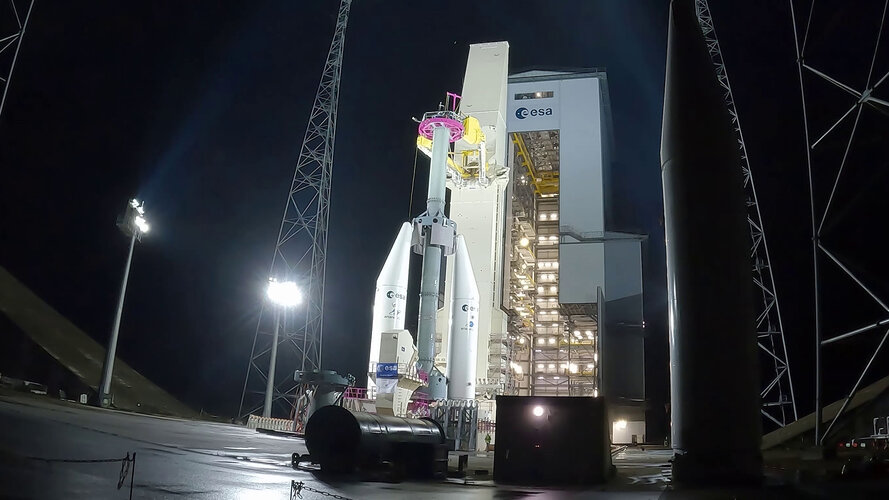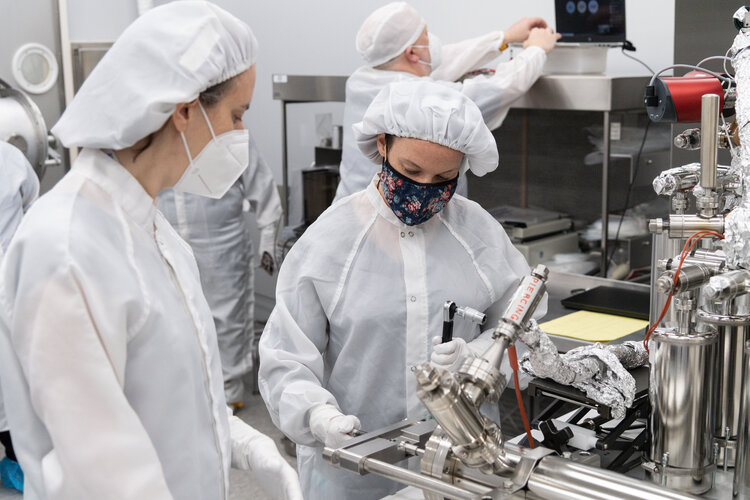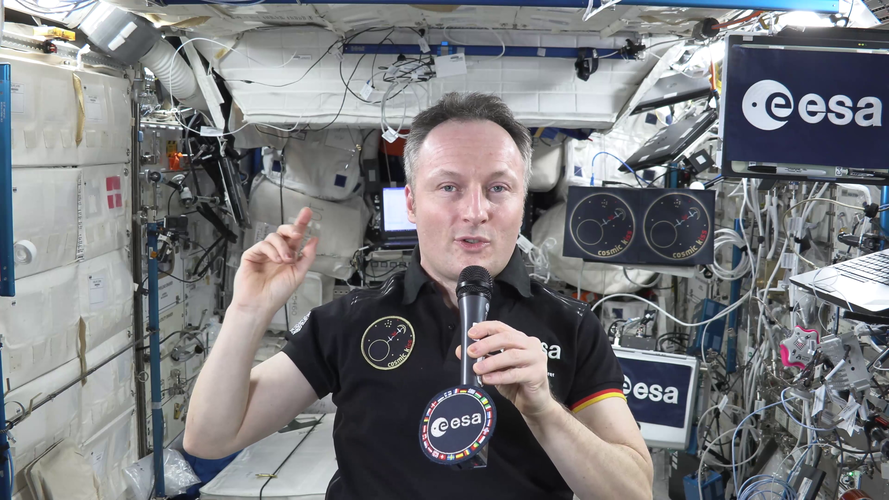
Copernical Team
Fuel leak thwarts NASA's dress rehearsal for moon rocket

NASA's latest attempt to fuel its huge moon rocket for a countdown test was thwarted Thursday by a hazardous hydrogen leak, the latest in a series of vexing equipment trouble.
Plasma ejections from the sun could cause damage on Earth, scientists say
 An unusual magnetic storm from the sun will aim at the Earth soon, possibly beginning Thursday, and experts say it has the potential to cause some noticeable damage here on our planet.
Scientists say that the solar activity - called a geomagnetic storm - will produce a magnetic discharge and send it in the direction toward Earth. In other words, essentially, that means that increased
An unusual magnetic storm from the sun will aim at the Earth soon, possibly beginning Thursday, and experts say it has the potential to cause some noticeable damage here on our planet.
Scientists say that the solar activity - called a geomagnetic storm - will produce a magnetic discharge and send it in the direction toward Earth. In other words, essentially, that means that increased Ariane 6 cryo-arms mimic liftoff
 Video:
00:01:24
Video:
00:01:24
Europe’s Spaceport in French Guiana is preparing for the arrival of Ariane 6, ESA’s new heavy-lift rocket. The latest round of testing aims to validate the system of fuel lines and mechanical supporting arms that will keep Ariane 6 topped up with liquid hydrogen and liquid oxygen in the critical moments before liftoff. This work is part of the final preparations of the new Ariane 6 launch complex and all the systems necessary for a launch.
With the mobile gantry fully retracted – as for a launch – two articulated arms attached to the upper part of the
Industry Space Days 2022: join Europe’s space community at ESA/ESTEC

Register now to attend ESA’s Industry Space Days (ISD) at the European Space Research and Technology Centre (ESTEC) in Noordwijk, the Netherlands, on 28–29 September 2022.
Pop goes the Moon
 Image:
Image:
A satisfying, audible ‘pop’ marked a successful piercing of the sealed Apollo 17 sample container using the ESA designed and built piercing tool. The tool forms part of a gas sampling system with a gas extraction manifold, designed and built by Washington University St Louis, USA.
Francesca McDonald, science and project lead of ESA’s contribution to the Apollo Next-Generation Sample Analysis (ANGSA) programme, is pictured at the centre of this image with the piercing tool, which contains the pristine sample.
Francesca and colleague, Timon Schild, delivered the ESA piercing tool to NASA’s Johnson Space Center in late 2021 in preparation
Join online: Earth Observation Industry Day 13 May

Earth Observation Industry Day
Join online and learn about ESA's Ministerial Council plans for TRUTHS and FutureEO, 13 May
Matthias's first spacewalk | Cosmic Kiss
 Video:
00:16:36
Video:
00:16:36
English Matthias's first spacewalk | Cosmic Kiss
On 23 March 2022, ESA astronaut Matthias Maurer successfully performed his first extravehicular activity (EVA) alongside fellow NASA astronaut Raja Chari. The spacewalk, dubbed "US EVA 80", was carried out in support of assembly, refurbishment and maintenance work on the International Space Station.
In this video, Matthias Maurer answers questions and reports on his experiences, feelings and the challenges he faced during his almost seven-hour-long spacewalk.
During his Cosmic Kiss mission, Matthias Maurer will live and work aboard the International Space Station for approximately six months, conducting and supporting more than 35 European
Orbital Assembly and Irvine to study health on ISS for 100 Year Starship project
 Orbital Assembly Corporation (OAC), the only company advancing the development and operation of the first commercially viable, space-based business park with gravity, is partnering with the 100 Year Starship initiative, seed-funded by DARPA, founded and led former astronaut Dr. Mae Jemison. University of California Irvine professor Ronke Olabisi, Ph.D. will also collaborate on the study of Gravi
Orbital Assembly Corporation (OAC), the only company advancing the development and operation of the first commercially viable, space-based business park with gravity, is partnering with the 100 Year Starship initiative, seed-funded by DARPA, founded and led former astronaut Dr. Mae Jemison. University of California Irvine professor Ronke Olabisi, Ph.D. will also collaborate on the study of Gravi Intelsat supports programmers with cloud connect media
 Intelsat - operator of the world's largest integrated satellite and terrestrial network and a leading provider of inflight connectivity (IFC) - has announced its latest service offering: Cloud Connect Media, a connectivity solution that provides programmers with secure access between the IntelsatOne Media Network and Amazon Web Services (AWS).
Cloud Connect Media is designed to provide con
Intelsat - operator of the world's largest integrated satellite and terrestrial network and a leading provider of inflight connectivity (IFC) - has announced its latest service offering: Cloud Connect Media, a connectivity solution that provides programmers with secure access between the IntelsatOne Media Network and Amazon Web Services (AWS).
Cloud Connect Media is designed to provide con Tianzhou 4's rocket arrives in Hainan
 The Long March 7 carrier rocket tasked with launching the Tianzhou 4 cargo spacecraft arrived at Wenchang Space Launch Center in Hainan province on Monday, the China Manned Space Agency said.
Next, the rocket will be assembled and undergo ground tests with the robotic spaceship at the coastal launch complex, the agency said in a brief statement.
Tianzhou 4, the country's fourth cargo
The Long March 7 carrier rocket tasked with launching the Tianzhou 4 cargo spacecraft arrived at Wenchang Space Launch Center in Hainan province on Monday, the China Manned Space Agency said.
Next, the rocket will be assembled and undergo ground tests with the robotic spaceship at the coastal launch complex, the agency said in a brief statement.
Tianzhou 4, the country's fourth cargo 